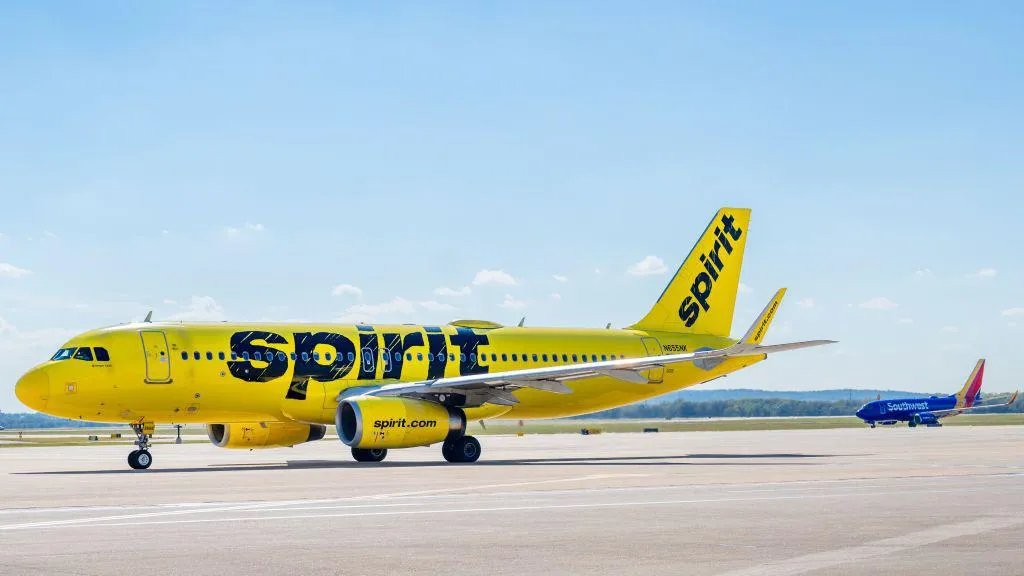
Spirit Airlines, a prominent U.S. budget carrier, has filed for Chapter 11 bankruptcy protection after struggling with ongoing financial losses and a series of failed merger attempts. The Florida-based airline announced on Monday that it had reached an agreement to restructure its debt and raise funds during the bankruptcy process, which is expected to last until early 2025.
Despite filing for bankruptcy, Spirit emphasized that its day-to-day operations would continue as usual, and there would be no disruption to passenger services. The airline reassured customers that flights would operate as scheduled, and passengers should not expect any changes in the booking process. Spirit also clarified that its employees’ pay and benefits would not be affected by the bankruptcy proceedings, and payments to aircraft leasing companies would continue without interruption.
The filing marks a significant moment for the U.S. airline industry, as Spirit becomes the first major U.S. carrier to file for bankruptcy protection in over a decade. The last major U.S. airline to file for bankruptcy was American Airlines in 2011, which sought bankruptcy protection to reduce labor costs during a period of high fuel prices. Spirit’s financial woes, however, are rooted in a combination of factors, including rising competition in the budget travel market, mechanical issues with its fleet, and the lasting financial impact of the COVID-19 pandemic.
Since the pandemic, Spirit has not posted a full-year profit, and its financial troubles have only deepened in 2024. The airline reported losses of approximately $360 million in the first half of the year, despite strong demand for low-cost flights. The carrier’s reliance on a no-frills model, which offers minimal amenities to keep ticket prices low, has become increasingly difficult to sustain as operational costs have risen.
One of the key challenges Spirit has faced is growing competition in the budget airline sector, which has seen an influx of new carriers offering similar services. In addition, the airline has been forced to ground several of its planes due to mechanical issues, particularly with some of its engines, which has added to its operational costs. These factors have contributed to Spirit’s ongoing financial struggles.
Earlier this year, Spirit’s highly anticipated merger with JetBlue, valued at $3.8 billion, fell apart after a Massachusetts judge blocked the deal on antitrust grounds, citing concerns that it would reduce competition in the U.S. airline market. This was the second failed merger attempt for Spirit, following its unsuccessful 2022 bid to merge with Frontier Airlines. After a bidding war, JetBlue outbid Frontier for Spirit, but the merger ultimately collapsed when regulators raised concerns about its potential impact on competition.
Spirit’s bankruptcy filing is a setback for its shareholders, as the company will be de-listed from the New York Stock Exchange in the near future. The airline announced that its stock shares would be canceled with no value as part of its restructuring plan.
Founded in 1964 as a long-haul trucking company, Spirit transitioned into the airline business in the early 1980s and rebranded as Spirit Airlines in 1992. It quickly became known for its low-cost, no-frills service, offering budget-conscious travelers the ability to fly at a fraction of the price of traditional carriers. Spirit’s business model has been a pioneer in the low-cost travel sector, and despite its financial difficulties, the airline remains one of the largest budget carriers in the U.S.
As Spirit works through its bankruptcy process, the company will focus on restructuring its operations and debt while maintaining its position in the competitive budget travel market. The airline’s future will depend on its ability to navigate the challenges of the airline industry and adapt to the evolving needs of its customers.
In conclusion, while Spirit Airlines’ bankruptcy filing is a significant development, the airline’s operations will continue as normal during the restructuring period. It remains to be seen how the company will emerge from bankruptcy and whether it can overcome its financial challenges and maintain its role as a major player in the U.S. airline industry.








